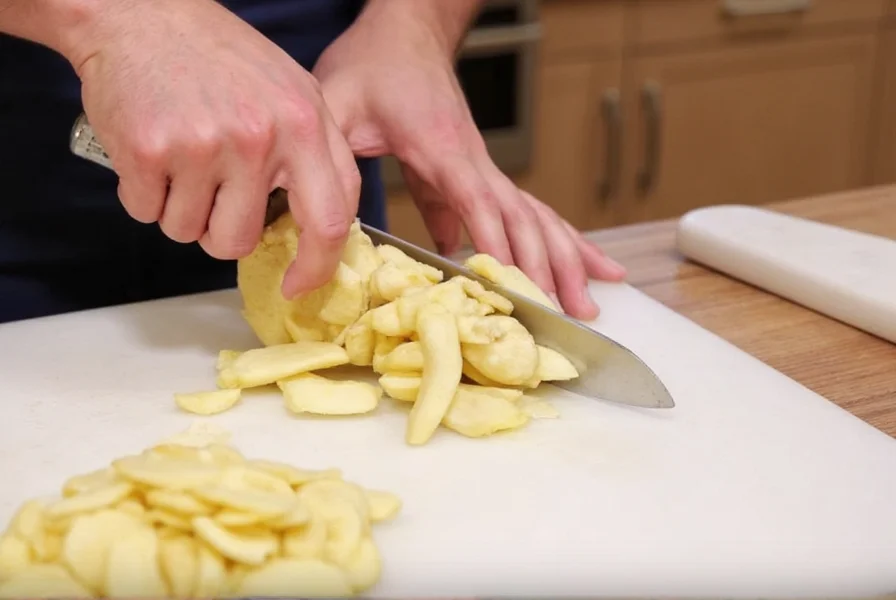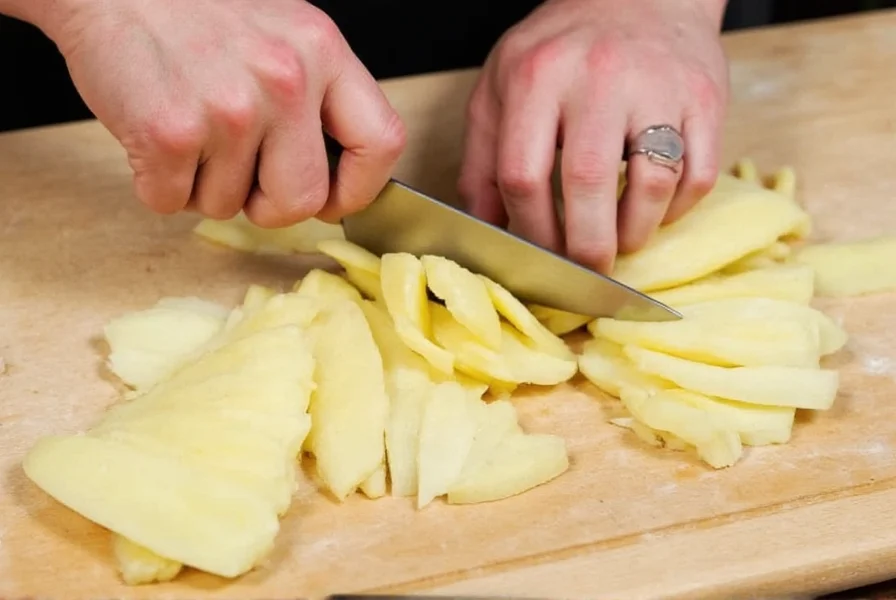
Mastering Ginger Preparation: A Complete Guide
Knowing how to cut ginger root properly transforms your cooking experience. Fresh ginger adds vibrant flavor to countless dishes, but its tough, knobby texture intimidates many home cooks. This guide provides professional techniques that maximize flavor extraction while minimizing waste and ensuring kitchen safety.
Essential Tools for Cutting Ginger Root
Before learning how do I cut ginger root, gather these kitchen essentials:
| Tool | Best For | Alternative |
|---|---|---|
| Sharp chef's knife (8-inch) | Slicing, dicing, mincing | Utility knife |
| Spoon (metal) | Peeling without waste | Vegetable peeler |
| Microplane grater | Fine grating for sauces | Box grater |
| Cutting board (stable) | Safe surface for preparation | Any non-slip surface |
Step-by-Step Ginger Cutting Techniques
Peeling Methods: Preserving Maximum Flavor
Unlike other roots, ginger's thin skin contains concentrated flavor compounds. The spoon method preserves more edible material than traditional peeling:
- Choose firm, smooth ginger with tight skin (avoid shriveled pieces)
- Hold ginger firmly on cutting board with non-dominant hand
- Use edge of metal spoon to scrape away skin in downward motions
- Follow ginger's natural contours to minimize waste
- Rinse briefly under cold water to remove any remaining fibers
Slicing Ginger for Different Culinary Applications
Understanding how to cut ginger root properly depends on your recipe requirements:
- Thin Slices (for teas or infusions): Cut crosswise against the grain into 1/8-inch pieces. This maximizes surface area for flavor extraction.
- Julienned Strips (for stir-fries): First slice horizontally, then stack slices and cut lengthwise into matchsticks.
- Fine Mincing (for sauces and dressings): Create thin slices, stack them, cut into strips, then rock knife through pieces repeatedly.
- Grated Ginger (for marinades): Freeze ginger first for easier grating. Use microplane for finest texture without fibers.
Safety Tips When Cutting Ginger Root
Ginger's irregular shape creates unique cutting challenges. Follow these safety guidelines for the safest way to handle and cut ginger root:
- Always cut away from your body with controlled motions
- Create a stable base by slicing a thin piece from one side first
- Use claw grip with non-dominant hand to protect fingertips
- Work on a damp towel under cutting board to prevent slipping
- Never attempt to cut ginger with dull knives (increases slippage risk)
Proper Storage of Cut Ginger
Learn how to store cut ginger root properly to maintain freshness:
- Refrigerate in airtight container with slightly damp paper towel
- Submerge in sherry or vodka for extended preservation (up to 3 months)
- Freeze whole or sliced ginger in freezer bags (no need to thaw before use)
- Store peeled ginger in dry sherry for up to three weeks
Common Ginger Cutting Mistakes to Avoid
Even experienced cooks make these errors when preparing ginger:
- Using a dull knife: Causes crushing rather than clean cuts, releasing bitter compounds
- Cutting with the grain: Creates stringy, fibrous pieces that don't incorporate well into dishes
- Peeling too deeply: Removes valuable flavor compounds concentrated just beneath the skin
- Improper storage: Exposing cut ginger to air causes rapid oxidation and flavor loss
Advanced Ginger Preparation Techniques
Professional chefs use these methods for optimal flavor extraction:
- Dry brining: Sprinkle salt on cut surfaces and let sit 10 minutes before cooking to concentrate flavors
- Infused oils: Gently heat sliced ginger in neutral oil to create aromatic cooking medium
- Crystallized ginger: Simmer thin slices in sugar syrup for sweet preserves
- Ginger water: Steep thin slices in hot water for digestive tea (15 minutes minimum)
Frequently Asked Questions
Can I cut ginger without peeling it first?
Yes, you can use unpeeled ginger in certain applications. For teas or long-simmering dishes, simply wash thoroughly and slice thin. The skin contains concentrated flavor compounds, but may create texture issues in sauces or dressings where smooth consistency matters.
Why does my ginger become stringy when I cut it?
Stringiness occurs when cutting with the grain rather than against it. Ginger fibers run lengthwise through the root. Always slice crosswise (perpendicular to the fibers) for clean cuts that incorporate well into dishes. Older ginger tends to have tougher fibers, so use fresher roots when possible.
How thin should I slice ginger for stir-fry?
For stir-fry applications, slice ginger to approximately 1/16-inch thickness. Thinner slices distribute flavor more evenly throughout the dish without overwhelming individual bites. Julienne cuts (matchstick shapes) work particularly well as they cook quickly and integrate seamlessly with other ingredients.
What's the best way to cut frozen ginger?
Frozen ginger actually cuts more cleanly than fresh. Remove from freezer, quickly rinse under cold water to remove surface frost, then use a microplane or sharp knife. The cold temperature firms the fibers, making precise cuts easier. No need to thaw before cutting - this preserves flavor compounds that degrade during thawing.
How can I prevent ginger juice from irritating my skin?
Ginger's natural compounds can cause mild skin irritation for some people. Wear food-safe gloves during preparation, or apply a thin layer of cooking oil to your hands before handling. If irritation occurs, wash with cold water and apply vinegar to neutralize the compounds, followed by moisturizer.











 浙公网安备
33010002000092号
浙公网安备
33010002000092号 浙B2-20120091-4
浙B2-20120091-4